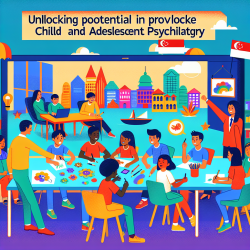Are you a practitioner looking to enhance your skills in online therapy? Recent research titled "Adapting a Clinical Practice Guideline for Management of Patients with Knee and Hip Osteoarthritis by Hong Kong Physiotherapists" offers valuable insights that could revolutionize your practice.
The study utilized the ADAPTE framework to tailor international clinical practice guidelines (CPGs) to the local context of Hong Kong. This adaptation process is essential for ensuring that the guidelines are culturally and clinically relevant, thereby improving their applicability and effectiveness.
Key Outcomes from the Research
- High-Quality Guidelines: The study identified three high-quality guidelines for knee and hip osteoarthritis: RACGP, AAOS, and KNGF. These guidelines were adapted to include recommendations that are more suited to the Hong Kong context.
- Multimodal Treatment: The adapted guidelines recommend a combination of land- and aquatic-based exercises, patient education, and self-management strategies for knee osteoarthritis. For hip osteoarthritis, land- and aquatic-based exercises are strongly recommended.
- Patient-Centered Care: The adaptation process emphasized the importance of considering cultural nuances, such as traditional Chinese medicine techniques like acupuncture, which are well-regarded in Hong Kong.
Implementing the Adapted Guidelines
For practitioners, the adapted guidelines provide a robust framework for managing knee and hip osteoarthritis. Here are some actionable steps you can take:
- Incorporate Multimodal Treatments: Utilize a combination of exercises, patient education, and self-management strategies to offer comprehensive care.
- Consider Cultural Context: Integrate traditional Chinese medicine techniques, such as acupuncture, to align with patient preferences and enhance treatment effectiveness.
- Continuous Monitoring: Regularly assess patient outcomes to ensure the effectiveness of the interventions and make necessary adjustments.
By implementing these adapted guidelines, you can significantly improve the quality of care you provide to patients with knee and hip osteoarthritis. For a deeper understanding, I encourage you to read the original research paper.










